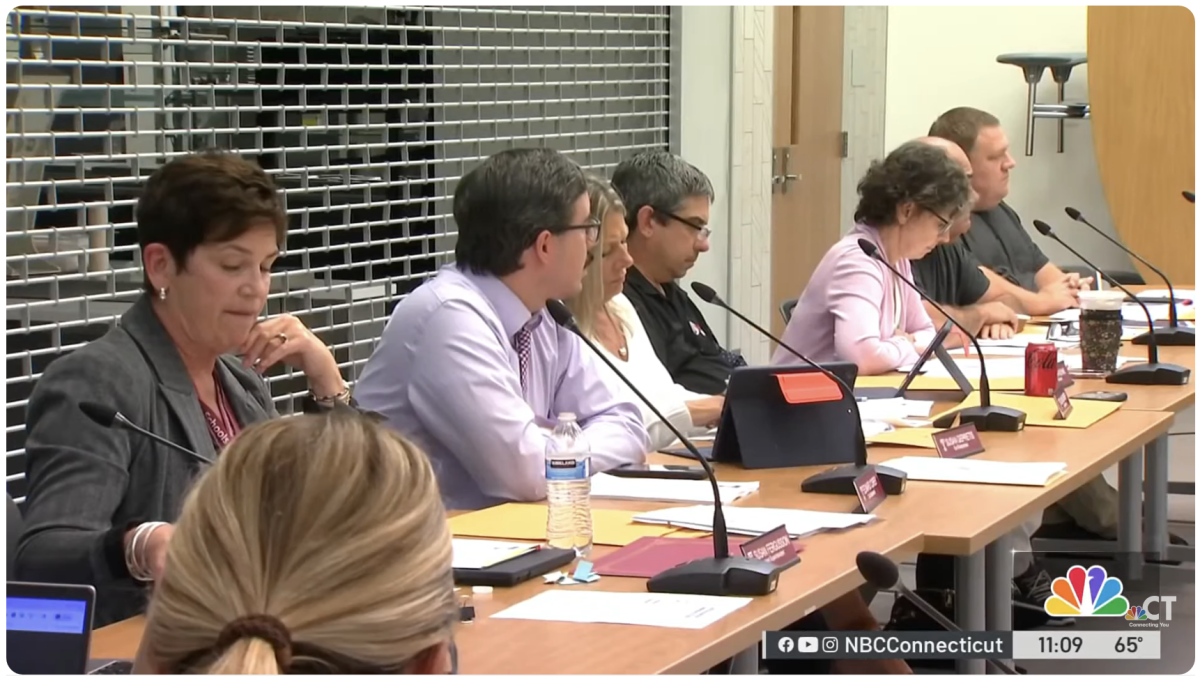
NBC Connecticut
Members of the Torrington Board of Education voted to implement a new teacher dress code, sparking public controversy.
You don’t have to be a teacher to see just how out of hand the new dress code is getting. After the student dress code left many of us scrambling for new clothes, the teachers are now stuck doing the same.
In September, the Board of Education had its first in-school meeting of the year. What really caught the attention of viewers was the discussion on the new teacher dress code.
With a seven-to-three vote, it was decided that teachers must dress “professionally”, complying with a new, explicit dress code that includes, among other items: Nothing shorter than two inches above the knee, no tight or see-through clothing, and no graphic tees or jeans, except on spirit days.
Teachers don’t just teach; they spend their days running around the halls, on the floor with struggling learners, and even coaching students, as was pointed out by educator and former board member Heidi Laus.
Laus, who has been teaching for 25 years, expressed her disappointment with the board and asked that attention be focused on students’ education and behaviour rather than the clothing a teacher wears.
What the board fails to consider most is who their staff really is. Board Member Gary Eucalitto compared the standards the board wants teachers to meet to college professors. To put a college professor and a kindergarten teacher on the same standard is a stretch. It is fair to say a six-year-old is less likely to be influenced by their teacher’s clothing than twenty-year-old college students.
After the vote was made, elementary school teachers left the meeting. Followed by this, comments were made by Co-Chair Susan DePretis that seemed intended to shame those teachers. DePretis is but one of the nine other members on the board who were never educators. Her comments, along with the board’s vote, suggest that the board is disconnected from the staff they oversee.
The allowance of “casual days” once a week reveals underlying intentions. This doesn’t appear to be a matter of education anymore, but rather a matter of control. It was discussed that teachers may wear jeans, but only if they are “dark.” Then the discussion decided the color didn’t matter, but was only allowed on certain days. Additionally, teachers may wear t-shirts, but only on permitted days. It seems they are granting these small allowances of freedom to keep teachers compliant.
Co-Chairsperson Edward Corey, who voted against the new policy, said during the meeting that, “while it is our right to impose whatever policies we want to write, I just don’t like doing government that way.” (“We” being the board).
In the end, it all comes back to the students. How is this standard of being professional supposed to benefit their education and their safety? Senior Mathew Tsai, on track to be Valedictorian this year, says that how professional a teacher looks does not affect how he learns, nor how he himself dresses. He claims that if anything, “social media has a bigger influence.”
Tsai also states that “[a standard of] professionalism isn’t that big of a deal” to him. He says that “interpersonal connection is a lot more important in the learning process nowadays.”
Hopefully, next time, when policies look to affect students, the Board of Education will look to get input from those students, the people who are truly affected by these decisions.